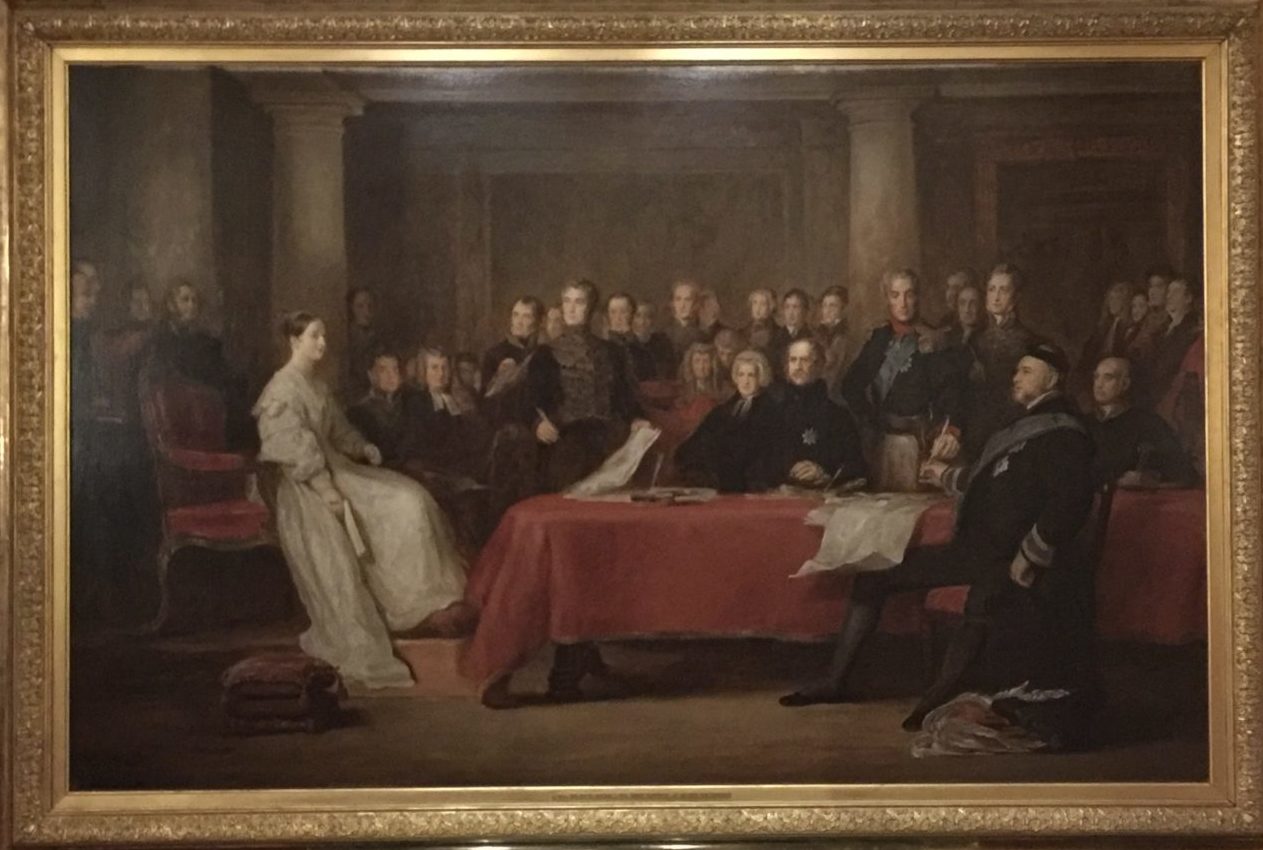After the Treaty of 1763, the Maritime peninsula was all considered the British colony of Nova Scotia. In 1769, St. John’s Island broke away to become its own colony, and would transform into Prince Edward Island, (PEI), in 1798.
, and The Loyalists: Revolution, Exile, Settlement
) This significant migration started to tilt the British population of the several Canadian colonies toward English speech and legal traditions. They expected “royal” treatment, of course. The Nova Scotians were not very impressed with the uppity newcomers. So, the Loyalists petitioned George III, who split apart the western section of Nova Scotia, and New Brunswick was born.
Recapping the score, by 1784, the British colonies were PEI, Nova Scotia and New Brunswick, all south of the St. Lawrence. The larger colony north of the river was split between eastern, Catholic, French “Lower Canada” and western, Protestant, British “Upper Canada”. In this case “lower” and “upper” referred to their location relative to the mouth of the St. Lawrence River, (like Upper Nile and Lower Nile). British and French traditions continued to prevail in their respective locales. You can probably see where this is headed.
The three British Maritime provinces got along reasonably well. However, those vindictive American ex-colonies punished the Loyalist Canadians by revoking free trade between the Canadian colonies and the American states. So, the Maritime colonists had to expand their trade with the other Canadian provinces and the Homeland.
Meanwhile, in Upper and Lower Canada, things were a bit more complex. Each of the two provinces had its own elected assembly. However, any acts passed by the assemblies had to be approved by the Governor General of Canada, appointed by the Crown. Both provinces started to see political power become concentrated in a small, loyalist group of British merchants and landowners, well connected with the Governor.
In Lower Canada, this ruling cadre was working to reverse the French religion and traditions. In Upper Canada, the little control group included a bunch of elitists. In 1837, first, the French rebelled in Lower Canada and, then, the non-elitists rebelled in Upper Canada. Both rebellions were smothered militarily. However, to prevent a full-blown Canadian Revolution, the Crown agreed to radical change.

In 1841, the scepter was waved and Upper and Lower Canada were re-anointed as “West Canada” and “East Canada”, respectively, and merged into the Province of Canada. There was one Canadian Parliament, retaining the Crown as the Head of State. In effect, they were given proper British independence, as long as they still bowed to Queen Victoria. Queen Victoria: A Personal History
This “royal-lite” version of colonial governance was called “responsible government”, meaning that the Canadians were basically responsible for their own government, with a nod to the Crown. By now, the populations of British East and French West were pretty even. The hope was that the French would gradually morph into good British Protestant Canadians and relinquish their need for those troublesome French Catholic traditions.
The French have a great expression, “Comment?” It can mean anything from a polite “Excuse me?” to a somewhat more aggressive “How could you possibly say something so stupid?!” And so, to the elite British notion that the French would gradually fade into the British woodwork, we say a rather aggressive “Comment?” It was not going to happen. The respective parties in the combined Canadian Parliament waged a gridlocked political war for another 20 years.
By 1864, the three Maritime colonies were beginning to think their union might afford them more independence and respect in London. Just as they were sitting down to the table to discuss the prospects, the Premier of the Province of Canada, John MacDonald, asked if he could be included in the federation talks. (John A: The Man Who Made Us) It was apparent they would all be stronger if united, particularly in support of economic expansion across the continent, similar to their southern American neighbors.
It took three years of haggling over the structures of government and the relative weights of provincial representation to hammer out an agreement. On July 1, 1867, by declaration of Queen Victoria, the four provinces of Quebec (formerly Canada East), Ontario (formerly Canada West), New Brunswick, and Nova Scotia transformed into the Dominion of Canada. Within 15 years, most of the other provinces and territories had joined, extending Canada west to the Pacific Ocean and north to the Arctic Ocean. Reluctant Newfoundland finally jumped aboard in 1949.
Though Prince Edward Island did not join the confederation until six years after the official Act of Union of 1867, it still insists it is the birthplace of Canada. Within an easy stroll from the ship’s dock, you will find the national museum commemorating the events of the birth of the nation. It’s all in The Penguin History of Canada.
As an amusing side light to the story, there were many discussions about the nature of the government structures for the new nation. For guidance, they looked south to the America model, which they found to be very good, with one glaring “defect”. MacDonald was very concerned that an elected president with specific terms of office would never really be a true sovereign, and would never really be respected as the “head of the nation”. They were sure the president would only amount to the head of his political party and would never rise above partisan politics, being always preoccupied with re-election. So, instead, they opted to stick with their Queen, a true sovereign. Given, the current nature of American politics, it appears they may have had a crystal ball!






